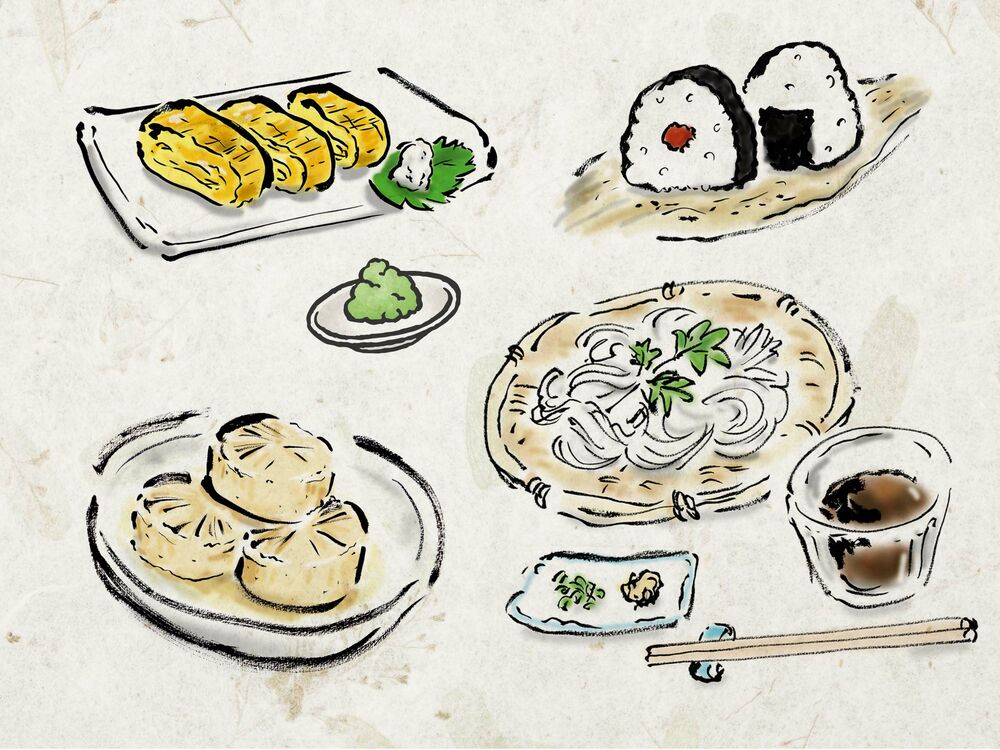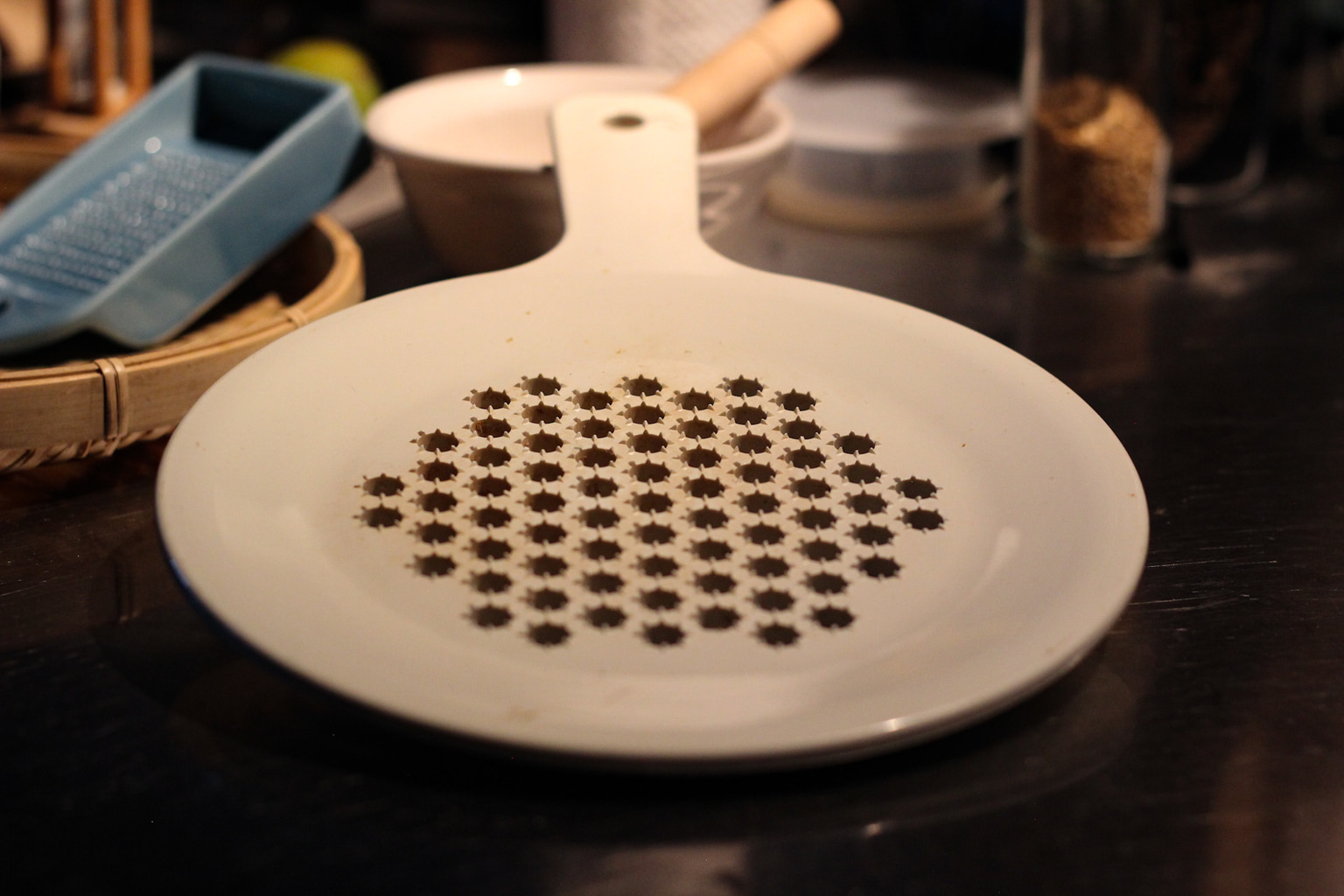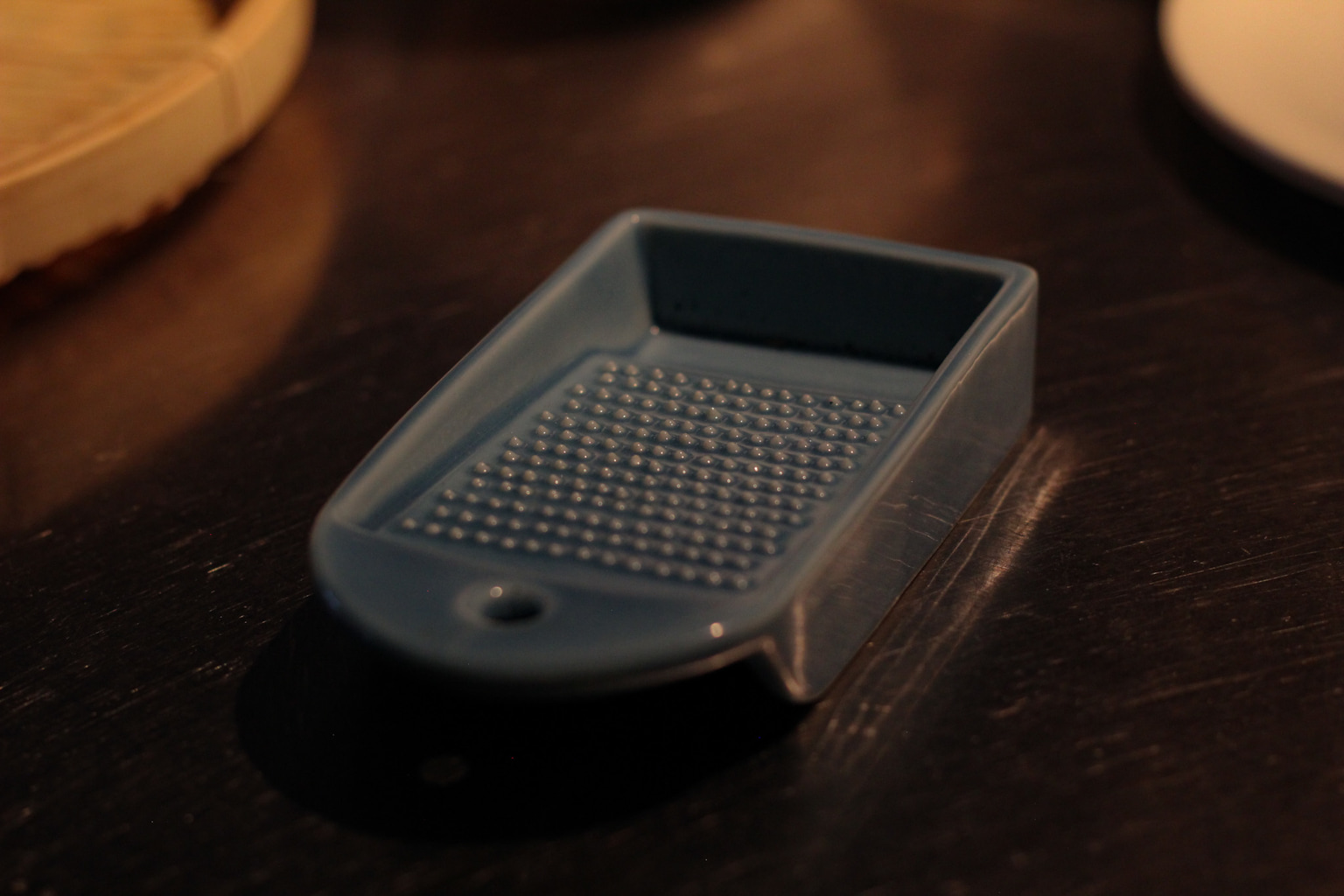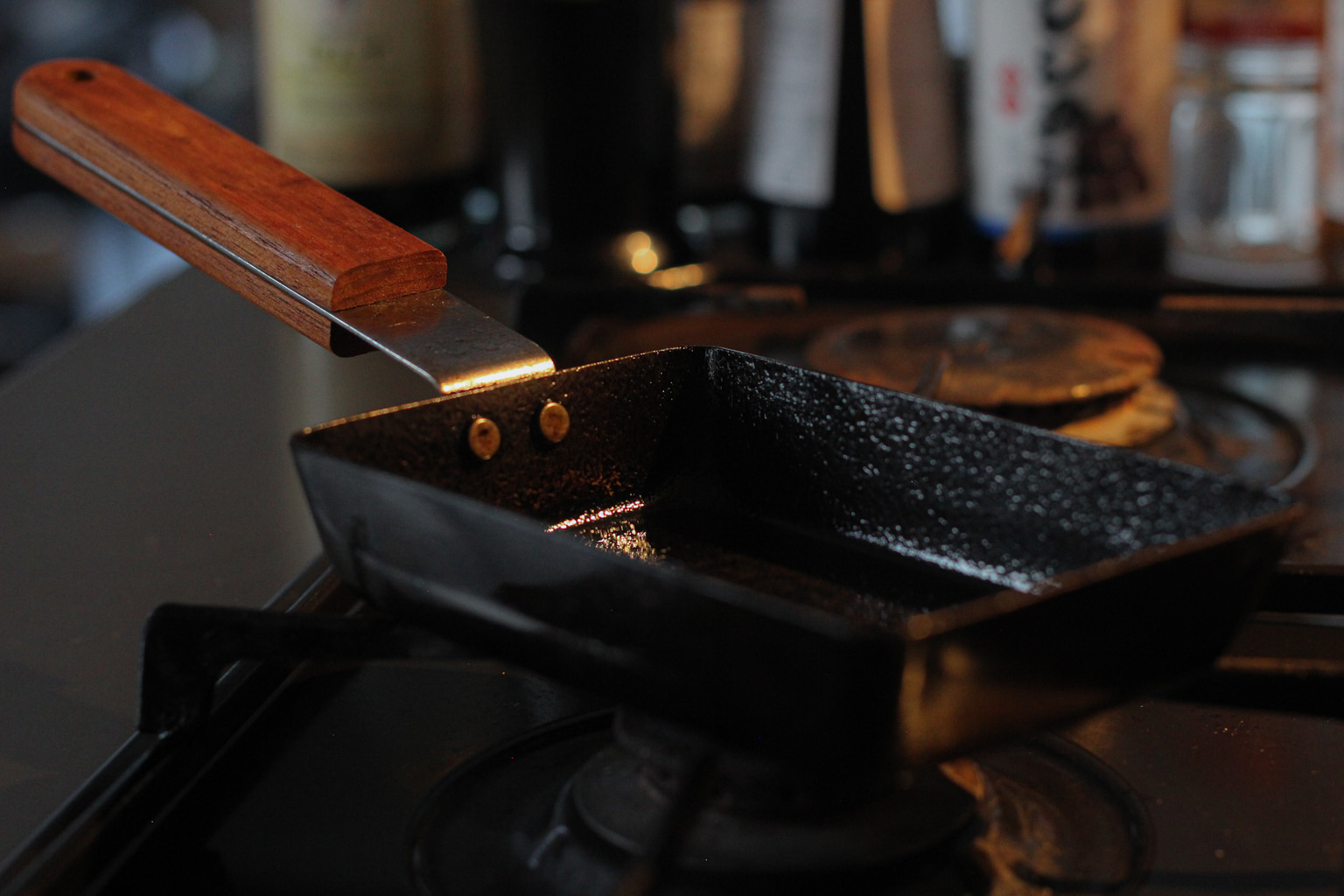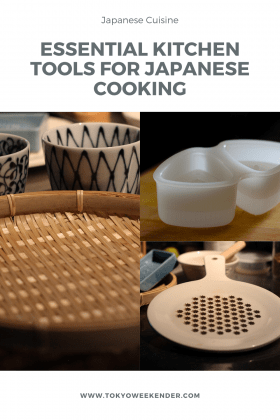From crafting the humble bento to tackling various Japanese ingredients, cooking Japanese cuisine for yourself can be both exciting and challenging. Considering all the new dishes, flavors and kitchen techniques one will be introduced to when learning to cook Japanese dishes can seem a gargantuan task, but with the correct kitchen utensils by your side, it’s as easy as cracking an egg.
Daikon Grater
An amazingly versatile root vegetable, daikon is a main player in the Japanese cuisine game, taking on the roles of both condiment and staple. The somewhat spicy root vegetable can be a pain to prepare, especially when it takes the form of oroshi daikon. Oroshi daikon or grated daikon has been used to give certain noodle dishes an extra punch and is even served alongside grilled fish for a little extra flavor. To grate a daikon, one is going to need something a little more powerful than your household cheese grater, as this staple side is traditionally smashed and shredded by this circle apparatus. The daikon grater is easy to use. Rotate the daikon against the grater in a circular motion and the serrated circular blades will do the rest.
Wasabi Grater
Sticking to the theme of grated root vegetables we have the wasabi grater. For around ¥100, one can easily buy a factory-grated tube of wasabi. However, the naturally sweet taste of freshly grated wasabi is something to behold. A wasabi grater is only essential for those who really wish to wow their Japanese guests, as this kitchen tool and the fresh wasabi that accompanies it lets guests know their host has knowledge of the finer things in life. The grater also adds an element of theater to the table when entertaining guests, as although a lot of wasabi is eaten in Japan, few really take the time to grate their own before a meal as this is usually something saved for restaurants and fine dining establishments. Become the talk of the neighborhood with this stylish addition to any kitchen.
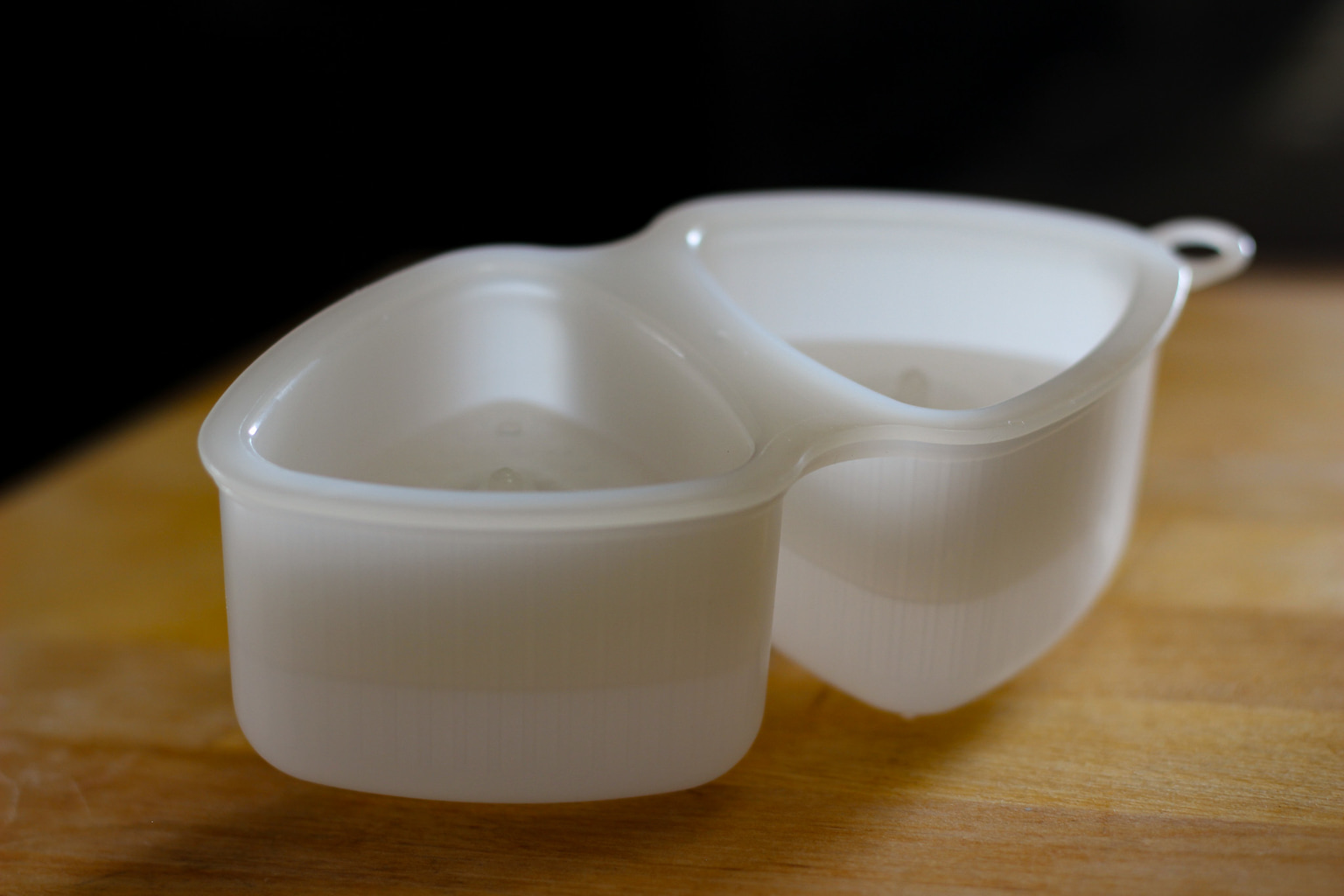
Onigiri maker
The humble onigiri is simple enough, a triangle of slightly seasoned rice filled with anything from tuna-mayo to salted pork. The simplicity of the dish is where many make their first mistake, as crafting perfect rice triangles is more difficult than one might think. Found at most hundred yen stores, the onigiri maker is a simple apparatus allowing the user to create perfect onigiri every time. This inexpensive kitchen tool is essential when crafting bentos and picnic boxes. Never create a square onigiri again.
Tamagoyaki Pan
The tamagoyaki is a square Japanese style omelet flavored with dashi and mirin, this fluffy omelet is a staple in any bento box and can be customized in so many interesting ways. The beautifully crafted square omelets are insanely difficult to craft in a traditional circle pan making the square tamagoyaki pan the best way to create household favorites. Tamagoyaki pans come in various shapes and sizes from heavy deep cast iron pans to more dainty pans used to create thinner tamagoyaki. As there are so many variations, take your time when choosing.
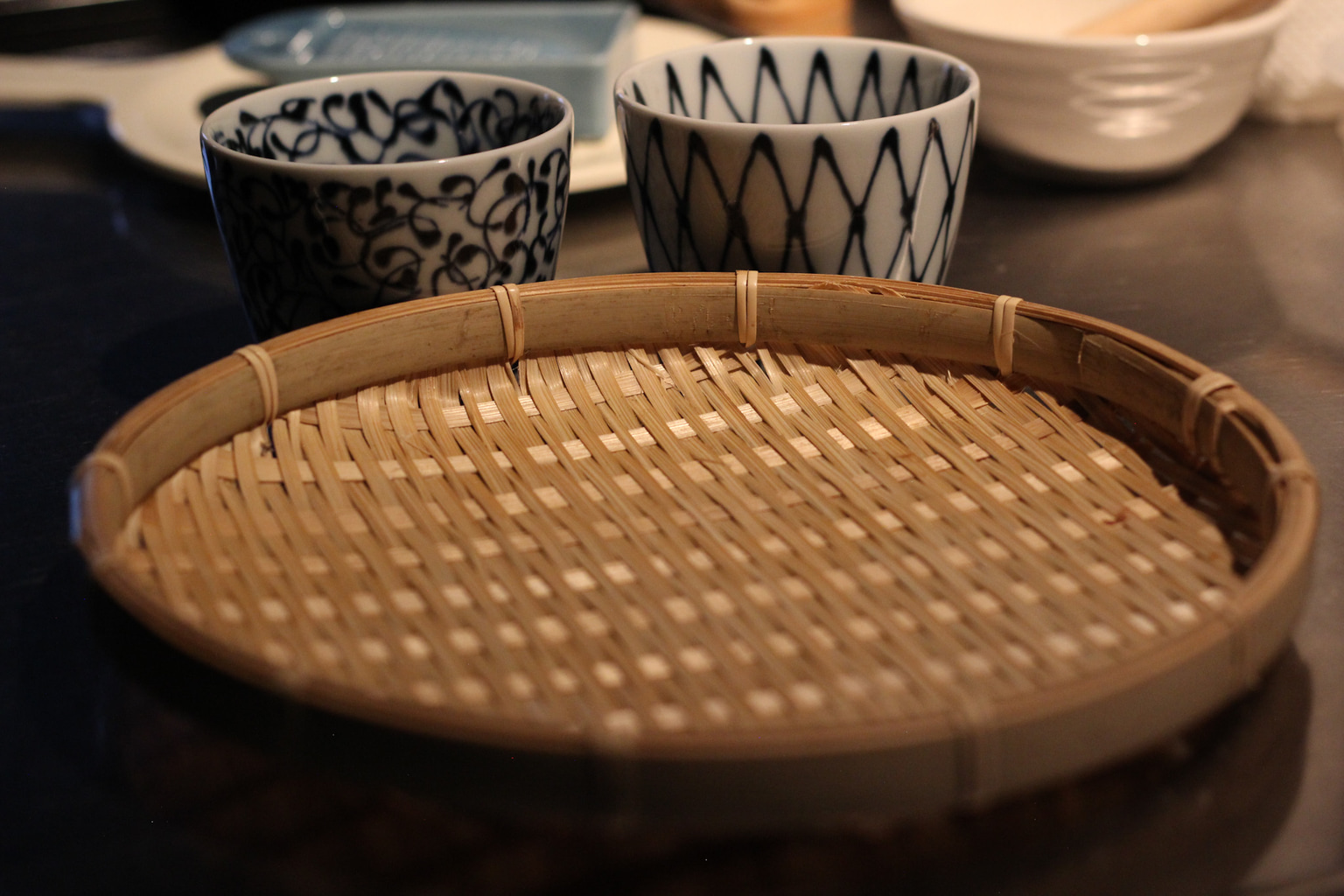
Soba Dish
The bamboo-woven soba dishes and cups aren’t what one would call essential cooking tools, but when one is serving soba to guests you better hope your bowl is woven. These traditionally woven bowls are, in this writer’s opinion, essential when serving udon or soba to guests. The cups that accompany said bowl are used for the soba dipping sauce and each guest traditionally has their own, with all that slurping who’d want to share? When it comes to Japanese cooking the tools you use in the kitchen are as important as the dishes the meals are served on. A long flat dish when serving fish, a deep bowl for ramen and a woven dish for soba. Impress your guests with your knowledge in the kitchen and in the dining room.
Updated On April 26, 2021

